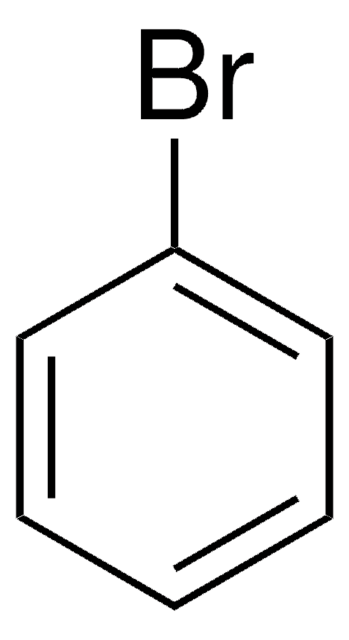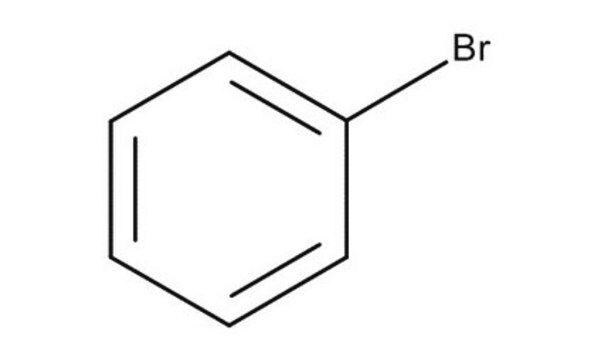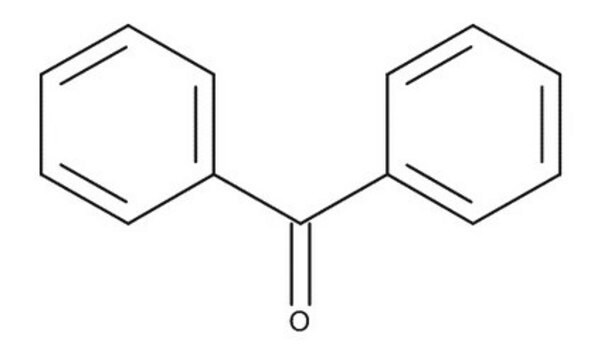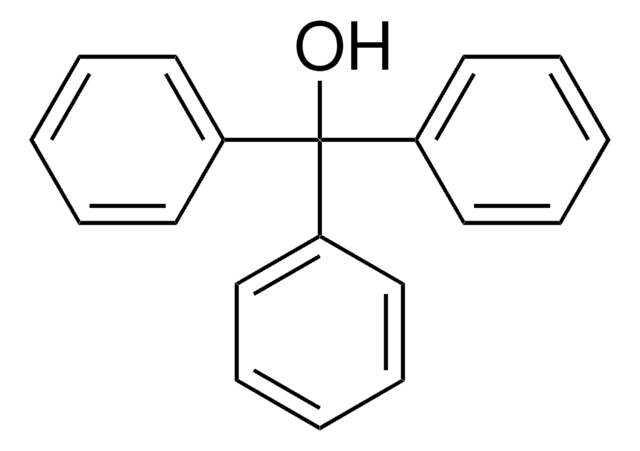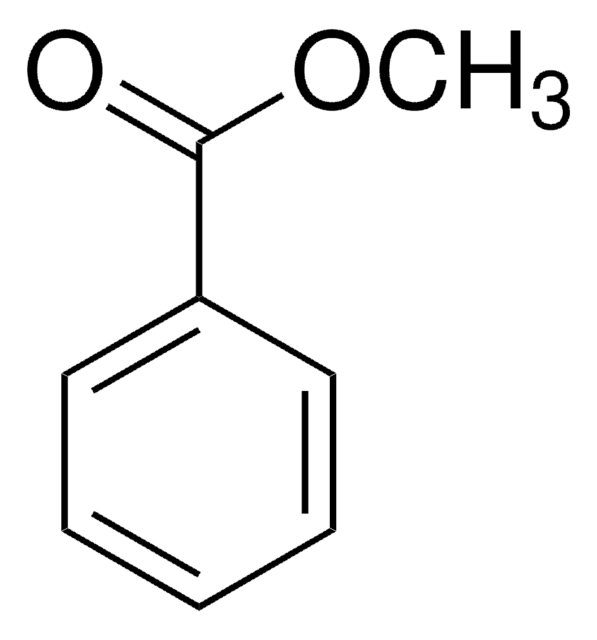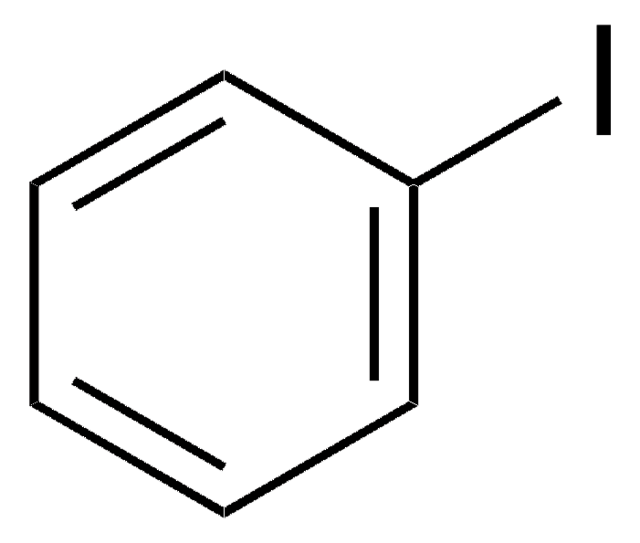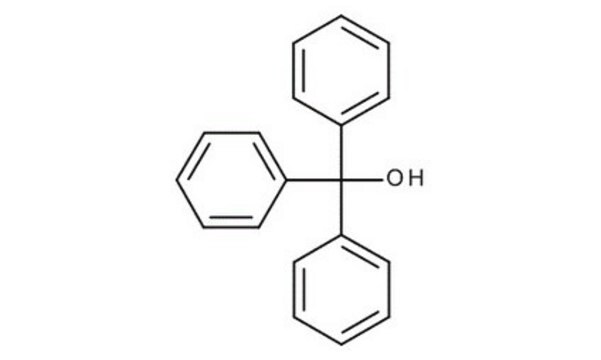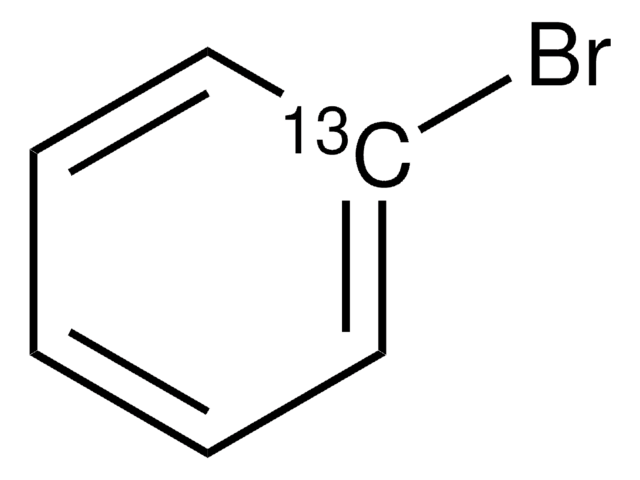B57702
Bromobenzene
ReagentPlus®, 99%
Synonym(s):
1-Bromobenzene, Bromobenzol, Monobromobenzene, Phenyl bromide
About This Item
Recommended Products
vapor density
5.41 (vs air)
Quality Level
vapor pressure
10 mmHg ( 40 °C)
product line
ReagentPlus®
Assay
99%
form
liquid
autoignition temp.
1051 °F
expl. lim.
36.5 %
refractive index
n20/D 1.559 (lit.)
bp
156 °C (lit.)
mp
−31 °C (lit.)
density
1.474 g/mL at 25 °C
1.491 g/mL at 25 °C (lit.)
SMILES string
Brc1ccccc1
InChI
1S/C6H5Br/c7-6-4-2-1-3-5-6/h1-5H
InChI key
QARVLSVVCXYDNA-UHFFFAOYSA-N
Looking for similar products? Visit Product Comparison Guide
Related Categories
General description
Application
Legal Information
Signal Word
Warning
Hazard Statements
Precautionary Statements
Hazard Classifications
Aquatic Chronic 2 - Flam. Liq. 3 - Skin Irrit. 2
Storage Class Code
3 - Flammable liquids
WGK
WGK 2
Flash Point(F)
123.8 °F - closed cup
Flash Point(C)
51.0 °C - closed cup
Personal Protective Equipment
Regulatory Listings
Regulatory Listings are mainly provided for chemical products. Only limited information can be provided here for non-chemical products. No entry means none of the components are listed. It is the user’s obligation to ensure the safe and legal use of the product.
FSL
Group 4: Flammable liquids
Type 2 petroleums
Hazardous rank III
Water insoluble liquid
ISHL Indicated Name
Substances Subject to be Indicated Names
ISHL Notified Names
Substances Subject to be Notified Names
JAN Code
B57702-100ML:
B57702-VAR:
B57702-18L:
B57702-250ML:
B57702-2.5L:
B57702-BULK:
B57702-500ML:
B57702-2L:
Choose from one of the most recent versions:
Already Own This Product?
Find documentation for the products that you have recently purchased in the Document Library.
Customers Also Viewed
Articles
The Heck reaction is the palladium catalyzed cross-coupling reaction between alkenes and aryl or vinyl halides (or triflates) to afford substituted alkenes.
Global Trade Item Number
| SKU | GTIN |
|---|---|
| B57702-500ML | 4061833434161 |
| B57702-100ML | 4061833434147 |
| B57702-18L | 4061837083945 |
| B57702-2L | 4061833434154 |
Our team of scientists has experience in all areas of research including Life Science, Material Science, Chemical Synthesis, Chromatography, Analytical and many others.
Contact Technical Service